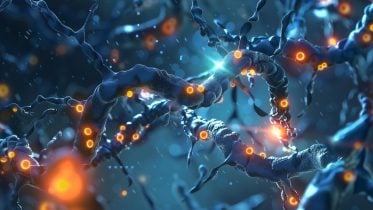Canadian researchers have discovered a potential pathway to curing ALS by targeting protein interactions, significantly supported by the Temerty Foundation’s philanthropy, with plans to advance to clinical trials in five years. Credit: SciTechDaily.com In a groundbreaking Canadian discovery powered by philanthropy, a team of Western University researchers led by Dr.
Michael Strong has uncovered a potential path toward a cure for amyotrophic lateral sclerosis (ALS). The breakthrough, which illustrates how protein interactions can preserve or prevent the nerve cell death that is a hallmark of ALS, is the culmination of decades of Western research backed by the Temerty Foundation. “As a doctor, it’s been so important for me to be able to sit down with a patient or their family and say to them, ‘We’re trying to stop this disease,’” said Strong, a clinician-scientist who has devoted his career to finding a cure for ALS.

“It’s been 30 years of work to get here; 30 years of looking after families and patients and their loved ones, when all we had was hope. This gives us reason to believe we’ve discovered a path to treatment.” ALS: Challenges and Breakthroughs ALS, also known as Lou Gehrig’s disease, is a debilitating neurodegenerative condition that progressively impairs nerve cells responsible for muscle control, leading to muscle wastage, paralysis and, ultimately, death.
The average life expectancy of an ALS patient post-diagnosis is a mere two to five yea.
















